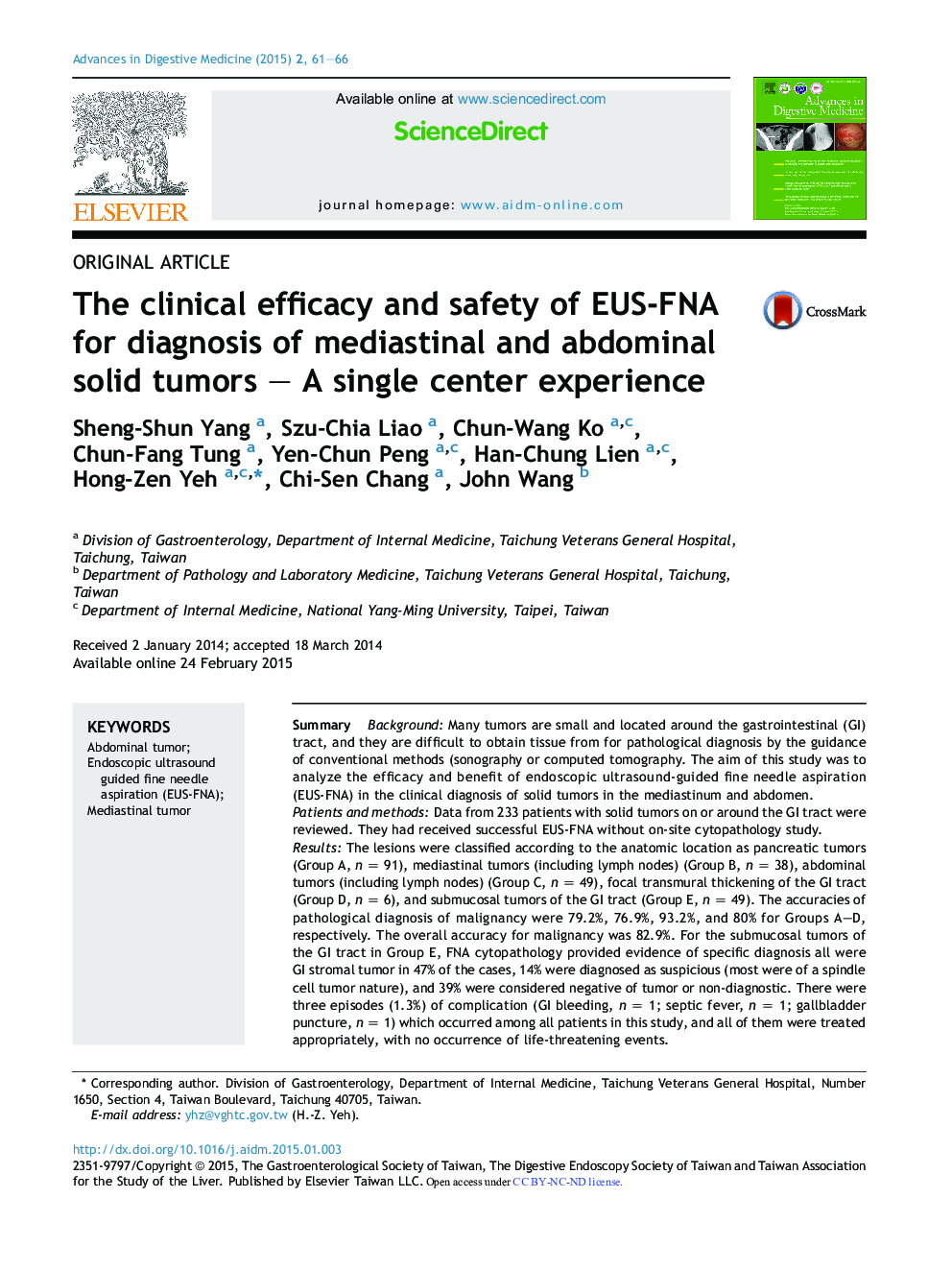| Article ID | Journal | Published Year | Pages | File Type |
|---|---|---|---|---|
| 3278569 | Advances in Digestive Medicine | 2015 | 6 Pages |
SummaryBackgroundMany tumors are small and located around the gastrointestinal (GI) tract, and they are difficult to obtain tissue from for pathological diagnosis by the guidance of conventional methods (sonography or computed tomography. The aim of this study was to analyze the efficacy and benefit of endoscopic ultrasound-guided fine needle aspiration (EUS-FNA) in the clinical diagnosis of solid tumors in the mediastinum and abdomen.Patients and methodsData from 233 patients with solid tumors on or around the GI tract were reviewed. They had received successful EUS-FNA without on-site cytopathology study.ResultsThe lesions were classified according to the anatomic location as pancreatic tumors (Group A, n = 91), mediastinal tumors (including lymph nodes) (Group B, n = 38), abdominal tumors (including lymph nodes) (Group C, n = 49), focal transmural thickening of the GI tract (Group D, n = 6), and submucosal tumors of the GI tract (Group E, n = 49). The accuracies of pathological diagnosis of malignancy were 79.2%, 76.9%, 93.2%, and 80% for Groups A–D, respectively. The overall accuracy for malignancy was 82.9%. For the submucosal tumors of the GI tract in Group E, FNA cytopathology provided evidence of specific diagnosis all were GI stromal tumor in 47% of the cases, 14% were diagnosed as suspicious (most were of a spindle cell tumor nature), and 39% were considered negative of tumor or non-diagnostic. There were three episodes (1.3%) of complication (GI bleeding, n = 1; septic fever, n = 1; gallbladder puncture, n = 1) which occurred among all patients in this study, and all of them were treated appropriately, with no occurrence of life-threatening events.ConclusionEUS-FNA appears to be a very useful tool for obtaining tissue diagnosis for lesions that are inaccessible by the conventional methods and was shown to be a safe and effective technique in the hands of experienced operators. Pathological diagnosis can be obtained for the guidance of clinical management to avoid the more invasive ways, such as surgery or mediastinal scope.
